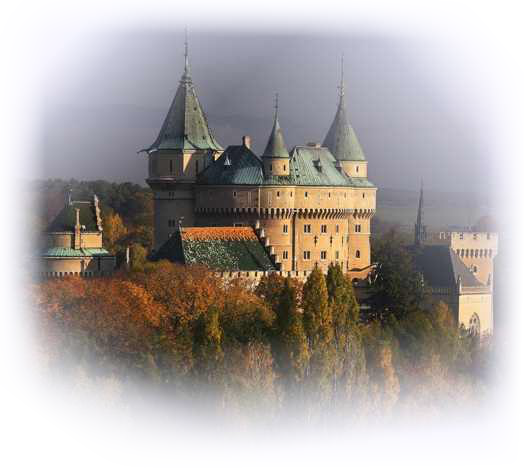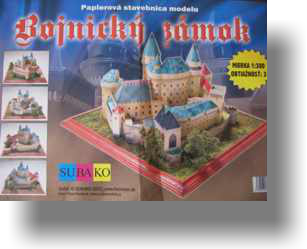

Bojnice Castle belongs to the oldest and most important memorials in Slovakia. It stands on a travertine hill over the town. The first written record of the existence of the castle comes from 1113 in the writ of Zobor Abbey.
It was originally a wooden castle developed from an older rampart. It was gradually built up from stone as the property of the Poznan family in the 13th century.
At the end of the 13th century the Ugrian tycoon Matus Cak Trenciansky seized Bojnice and the castle belonged to him until 1321. After Matus Cak Trenciansky in the 14th and 15th centuries the Castle was owned by further aristocratic families in succession: the Gileths, Leustachs and Noffrys.
In 1489 King Matej Korvin gave Bojnice Castle along with its domain to his illegitimate son Jan Korvin. After the death of King Matej the castle was seized by the troops of Zapolsky who inhabited it up to 1526. In 1527 the castle was presented to Alexej Thurzo by King Ferdinand I. The castle was transformed by the Thurzos and rebuilt into a convenient Renaissance residence. The original Gothic Castle was given the character of a Renaissance castle with residential houses of the same height lined up around the inner courtyard.
When the Thurzo family died out (in the year of 1636) the castle reverted to the crown. A year later, in 1637 Bojnice domain was put to Pavol Palfi in pledge by the Emperor Ferdinand III for 200 000 gold. In 1643 the Palfies gained Bojnice castle as patrimony. Building rush dominated in Bojnice and the castle received Baroque semblance. The building activity quieted down at the end of the 17th century. Its semblance was not markedly changed during the 18th and 19th centuries.
After a long period of stagnation and recession the last aristocratic owner Count Jan Frantisek Palfi obtained Bojnice domain with the castle in 1852. Count Palfi decided to rebuild the castle into a romantic castle. He used French Gothic castles in the valley of the river Loire, the papal palace in Avignone, Gothic Tyrolean castles and the early Renaissance Italian architecture as patterns. The architect of the Neogothic rebuilding was Jozef Hubert. But the architect became only a tool in the hands of his customer with a highly refined artistic taste.
Palfi himself drew, projected and controlled all work. This last Neo-Gothic rebuilding took up 22 years (1889 - 1910).
Count Palfi did not live to see its completion, he died in Vienna on 2 June 1908 as a bachelor. As he did not have any heirs of the body, soon after his death battles broke out between the relatives about the heritage. In 1923 an amicable agreement was closed between the heirs of Count Palfi and the Czechoslovakia, in which the collections were set that, would not be subjects of auctions. The auctions of the art collections of Count Palfi took place in the years of 1924, 1926.
In 1939 the castle and the domain belonging to it were bought by the firm Bata. After the war its property fell to the state based on Benes decrees.
Since 1950 a museum has definitely been installed that is part of the Slovak National Museum today.
Source: website Bojnice castle: http://www.bojnicecastle.sk






































